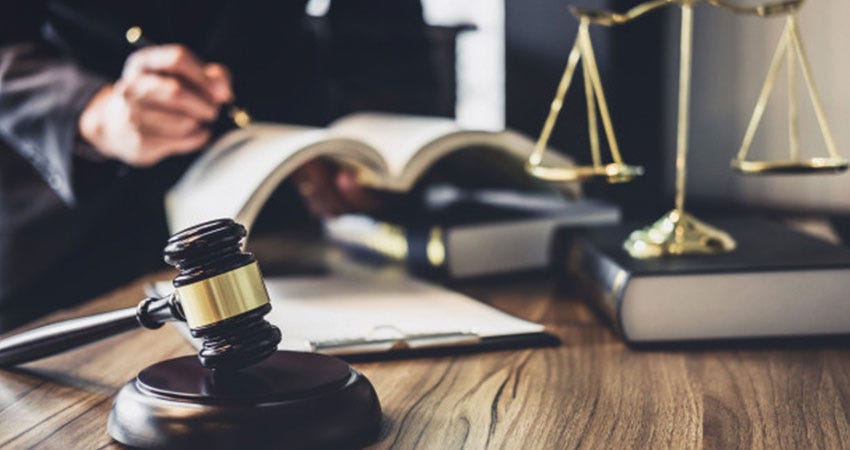
When professionals fail to meet the standards expected in their field, the consequences can be costly and far-reaching. Professional Negligence occurs when a trusted expert, such as a lawyer, doctor, or accountant, makes an error or omission that causes harm or loss to their client. Understanding the basics of this concept is essential for protecting your rights and interests.
Many people face confusion about what qualifies as professional negligence, how to prove it, and what legal steps to take. This guide answers common questions to help you navigate this complex topic with confidence. Whether you’re dealing with a potential claim or simply want to be informed, knowing the essentials can make all the difference.
What Is Professional Negligence and Who Can Be Held Liable?
Professional negligence refers to a failure by a professional to exercise the level of skill and care expected within their industry, resulting in harm or financial loss to a client. This can occur in fields like medicine, law, accounting, and engineering. Common examples include a lawyer filing incorrect legal documents, a doctor misdiagnosing a condition, or an accountant mishandling financial records.
Liability for professional negligence falls on the individual or entity contracted to provide specialized services. For instance, an employer may be liable for negligence committed by an employee acting within the scope of their duties. Independent contractors or firms can also be held accountable if evidence shows they breached their professional duty. Claimants must usually prove the professional had a duty of care, breached it, and directly caused damages. Resources like legal professionals or sites such as hagestadlaw.com can provide guidance on liability.
Common Examples of Professional Negligence in Various Fields
Medical Professionals
Medical negligence includes misdiagnoses, surgical errors, and prescription mistakes. For instance, a doctor failing to diagnose a severe condition like cancer can delay treatment and worsen the patient’s health.
Legal Practitioners
Legal negligence arises when lawyers fail to meet standard obligations. Examples include missing critical filing deadlines, providing incorrect legal advice, or improperly drafting contracts that harm a client’s case.
Accountants
Accountant negligence involves errors such as failing to identify tax liabilities or providing inaccurate financial reports. These mistakes may lead to audits, penalties, or significant financial losses for clients.
Architects and Engineers
Architectural or engineering negligence includes design flaws, disregard for safety codes, or project mismanagement. A poorly designed structure can result in additional construction costs or safety hazards.
Financial Advisors
Negligence by financial advisors includes offering unsuitable investment advice or failing to disclose risks. Mismanaging investments or funds can lead to severe financial loss for clients.
Real Estate Professionals
Real estate agents or brokers may commit negligence by failing to disclose property defects or inaccuracies in contracts. Errors can cause buyers to incur unexpected costs or legal disputes.
These examples demonstrate how professional negligence, as defined on resources like hagestadlaw.com, extends across diverse industries, impacting clients through inadequate services or mistakes.
Legal Defenses Available for Professionals Facing Negligence Claims
Professionals accused of negligence can utilize several legal defenses to mitigate liability. These defenses often depend on the specific circumstances of the claim.
- Absence of Duty of Care
A professional may argue that no formal duty of care existed between them and the claimant. Without this legal duty, negligence claims cannot proceed. - Lack of Breach
Professionals can demonstrate adherence to industry standards to refute claims of breaching a duty of care. Evidence like compliance records or expert testimony supports this defense. - No Causation Proven
If the claimant fails to connect the professional’s actions directly to the alleged harm, this defense can nullify the claim. Courts require clear causation for liability. - Contributory Negligence
In cases where claimants partially caused their harm, professionals may reduce liability. For example, failure by the claimant to follow provided instructions could constitute contributory negligence. - Statutory Limitations
Defendants can invoke statutes of limitation if the claimant files the lawsuit after the legally permissible time frame, which varies by jurisdiction. - Accepted Risk Assumption
If claimants knowingly assumed risks involved in the professional’s service, the professional may not be held liable for resulting harm.
Professionals can reduce exposure to claims through clear client agreements, consistent adherence to practices, and legal counsel. Entities like hagestadlaw.com provide further insights into defending against professional negligence claims.
How to Prove Duty of Care and Breach in Negligence Cases
Proving duty of care and breach in professional negligence cases requires demonstrating specific legal elements. Duty of care exists when a professional agrees to provide services, establishing a relationship where the client relies on their expertise. For example, lawyers drafting contracts or accountants preparing tax returns owe a duty of care to their clients by virtue of their professional engagement.
To prove a breach of duty, claimants must show that the professional failed to meet the standard of care expected in their industry. Courts typically evaluate this by comparing the actions of the accused professional to those of a competent peer in similar circumstances. For instance, a doctor missing a critical diagnosis may breach their duty if evidence shows another qualified doctor would have identified the issue under the same conditions.
Causation is also central to proving breach; the claimant must directly link the professional’s failure to the harm or loss experienced. If financial losses stem from an accountant’s error in financial reporting or a misstep in legal representation leads to unfavorable case outcomes, these demonstrate direct causation. Cases involving gray areas, such as overlapping external factors, may demand expert testimony to establish this link. For additional guidance, reputable sources like hagestadlaw.com can assist with understanding liability standards.
Claimants seeking to prove negligence should focus on documenting the professional relationship, collecting evidence of breaches, and linking harm explicitly to the professional’s actions.
Steps Professionals Can Take to Mitigate Risks
Professionals can reduce the likelihood of negligence claims by prioritizing clear communication, maintaining detailed records, and staying updated on industry standards. Regular training and adherence to best practices ensure they consistently meet expectations.
Establishing transparent client agreements and setting realistic expectations also play a key role in minimizing misunderstandings. Seeking legal advice when drafting contracts or addressing potential issues can provide an added layer of protection.
By focusing on accountability and proactive measures, professionals can safeguard their reputation and build trust with clients while avoiding costly legal disputes.







